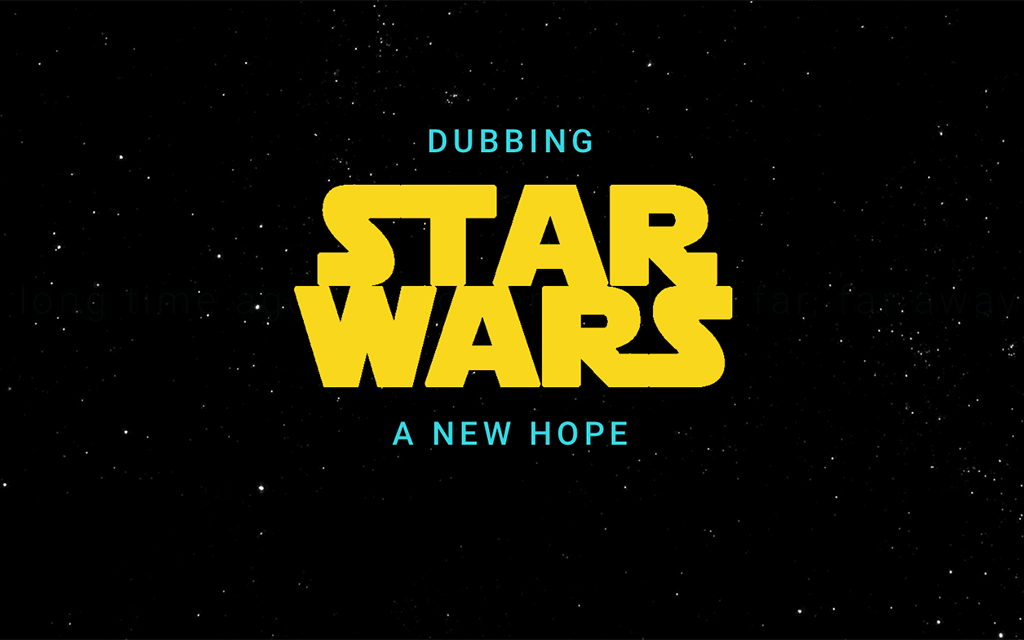[ad_1]
The language: With a centuries-old language far, far into the future
Many native speakers are working to ensure that the next generation receives Diné in order to revive the dying indigenous languages. This also includes getting young people excited about learning the language and starting conversations between speakers of all ages.
That led Wheeler to “Star Wars”.
The appeal of the film spans generations, and the translation sparked conversations about the persistence of the Navajo language.
“It reopens safe dialogue for people who don’t speak Navajo and want to learn Navajo. It reopens the dialog for fluent speakers, â€said Manny Wheeler.
After decades of language deterioration in boarding schools that Indigenous children first had to attend in the 1860s, and recent difficulties in maintaining language teaching and engagement among younger generations, many mother tongues are either endangered or extinct.
As soon as the Civilization Fund Act Adopted in 1819, the federal government began adopting a policy of assimilation to “civilize” indigenous peoples, one of which established boarding schools to westernize indigenous children. That meant punishing indigenous children if they spoke their own language instead of English.
From 1860 to 1978, tens of thousands of Native American children attended schools in the United States where You experienced “Physical, sexual, cultural, and spiritual abuse and neglect,” according to the National Native American Boarding School Healing Coalition.
While not every Indigenous child was sent to boarding school, the practice resulted in generations of people having little to no connection with their native language.
“The connection was broken,” said Wheeler.
The Navajo language is traditional passed on orally. However, as fewer and fewer people retained and shared the language, the number of native speakers quickly declined.
“We learned from our parents who spoke to us in Navajo, from our grandparents who spoke to us in Navajo,” said Yazzie. “But how is the language passed on since the generations do not speak it?”
After voicing Leia, Yazzie was inspired. She started making short language learning videos that she posts Tick ​​tock alongside Star War Cosplay and acting videos in Diné.
“I’ve started using my role as Princess Leia as a guide because that’s how people know me, that’s how people recognize me,” said Yazzie. “Now that I have your attention, let me teach you something.”
Yazzie posts basics like numbers and colors and takes translation requests from followers. It makes a difference, she said. Young and old play their videos in duets and follow their short lessons.
In a video she tackles the rainbow. Red is “lichxii†and blue is “dootl’izhâ€.
@ l1ttlewolves Partly REPOST РDin̩ Bizaad Colors #nativetiktoks #indigenous # din̩bizaad #navajo #Food
She said that TikTok’s short, digestible format makes it easier to retain information and attention. It fills a gap for oral lessons and complements it with short written and oral communication.
Your ultimate goal is to get people excited about the language, even if it’s only for a brief moment.
“It’s 60 seconds,” said Yazzie. “It’s not that you have to sit there for an hour.”
The art: Indigenous artists are featured in “The Force Is With Our People”
The aura surrounding the film extended far beyond the premiere.
Tony Thibodeau of the Museum of Northern Arizona in Flagstaff saw the dubbed film for the first time Indigenous Comic-Con in 2016.
Like Wheeler, he recognized his potential.
For the next three years, Thibodeau interviewed Star Wars-inspired Navajo artists and curated an exhibition at the museum – The Force Is With Our People.
The exhibition, which opened in October 2019, showed works by 24 local artists who reflect a “Star Wars†influence. The pieces in the gallery – some of which are still preserved today – included a Hopi R2D2, Hongeva-Camarillo’s golden C3PO cosplay, and an elaborately designed Darth Vader helmet.
Thibodeau found that “Star Wars†resonated with indigenous artists through three themes that combine Navajo culture with a film with a lasting impact on pop culture.
The first is power. Balance and harmony remain recurring themes in the Navajo teachings and oral traditions. In “Star Wars” much of the storyline revolves around the interactions between the dark side and the light side.
Thibodeau also noted the anti-imperialist themes in the artwork that echoed in the plot of the film series.
“This is literal resistance to military imperialism, resistance to empire,” he said. “This resonates with many indigenous peoples if you look at the history between western expansion, colonialism and western imperialism.”
The third parallel is the similarity between the indigenous landscape and the terrain of the planet Tatooine.
Thibodeau mentioned one of the artists in the show, Ryan Singer, who remembers playing with “Star Wars” toys in his grandmother’s house. Her back yard stretched out into a vast desert and made Singer feel like he was on the edge of the Great Pit of Carkoon.
A small part of the exhibition can still be seen – the Hopi R2D2, Diné interpretations of characters in comic style and Hongeva-Camarillo’s C3PO cosplay. It is important to emphasize to visitors that indigenous people and indigenous cultures are not frozen in time, he said.
“You can go back and see what that culture was like 50 or 100 years ago, but I think it’s also important to showcase aspects of today’s culture,†he said. “The indigenous people are just as influenced by popular culture as everyone else.”
[ad_2]

